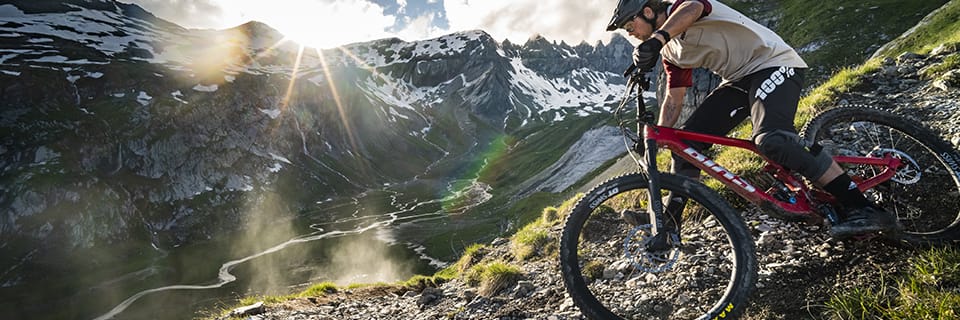Enduro biking has become increasingly popular over the last few years, thanks in particular to the success of the EWS circuit. It combines the adrenalin of DH with the freedom and escape of All Mountain biking. This versatility doesn't make choosing an Enduro bike easy. Here's what you need to know to make the right choice.
What is Enduro?
The sporty counterpart to All Mountain, with a more committed and/or competitive approach, Enduro will delight thrill-seekers who want to push their limits while still being able to make transitions on their bike, even if it means sacrificing a little efficiency, particularly in the climbing phases.
Less exclusive than DH, Enduro is enjoying great success, both in the media and among riders - thanks in particular to the EWS (Enduro World Series) circuit, which brings together the world's best riders - and has in just a few years become a discipline in its own right, with a number of new disciplines. bikes and specific components.
WHICH FRAME IS RIGHT FOR ME?
As with Cross-Country, the choice of material for an Enduro frame depends on your riding style and, of course, your budget. If you're a recreational rider, you'll need to focus on comfort and robustness (i.e. an aluminum frame), while if you're a seasoned competitor, the main criteria will be lightness and responsiveness, which logically leads to the choice of a carbon model. But once again, it's all a question of taste and budget, as some brands have opted to offer only aluminum, even on very high-end models. Many brands have also opted for an intermediate solution, with a carbon front triangle for liveliness and an aluminum rear triangle for strength.
In terms of kinematics, almost all Enduro frames are full-suspension mountain bikes with the shock absorber mounted either vertically or horizontally, depending on the brand's kinematics. In terms of geometry, these MOUNTAIN BIKES feature a longer top tube, shortened chainstays for greater control and responsiveness, and a dynamic rake angle.
As for the mountain bike wheelsall solutions are possible, even if the 27.5" is quite common thanks to its excellent compromise between responsiveness and ease of use. Under the impetus of certain pro riders, 29" is now the most widely used format, thanks to new geometries and the Boost standard. It's all a question of taste, as well as the rider's size: a 29" can be advantageous for riders over 1.70 m tall.
WITH WHAT EQUIPMENT?
In addition to a fork/shock unit capable of withstanding the toughest shocks (with average travels of 180 mm), your bike will necessarily be fitted with a telescopic seatpost to enhance comfort and performance. Brakes are of course to be considered with the utmost care, with discs at least 180 mm in diameter and, if possible, ventilated to avoid overheating, four-piston calipers (at least at the front) for maximum bite, and metal pads that better withstand high temperatures, guaranteeing effective braking all the way downhill.
Finally, the choice of mountain bike tires will greatly condition the quality of your riding. Whatever the terrain (wet, dry, stony), opt for a wide tire (at least 2.40" cross-section), with thick studs, especially on the sides, to ensure maximum grip when braking and cornering, and a relatively soft rubber compound (especially at the front) to stick to the terrain and absorb shocks effectively.
